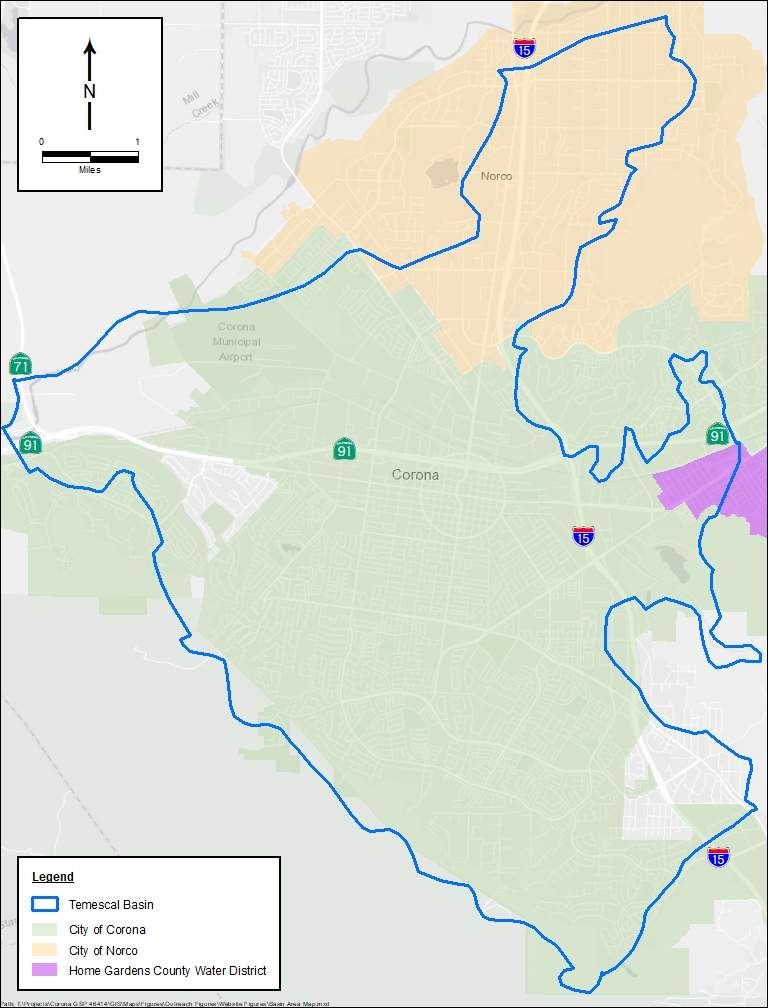What is Groundwater?
Groundwater matters to everyone. It’s an important source of water stored in the earth beneath our feet, in spaces between sand, soils, and fractured rock known as an aquifer. Layers of aquifers make up a groundwater basin, which can extend for miles. Groundwater is a critical buffer against the impacts of drought and climate variability/change, and plays a vital role in maintaining our region’s (and the State’s) economic and environmental sustainability. Sustainable groundwater management balances groundwater resources in a manner that ensures basin resiliency, which greatly benefits present and future generations. To learn more about groundwater, visit the California State Water Resources Control Board web page.
Temescal Groundwater Basin
The Temescal Basin shown below is within Riverside County and is largely covered by the City of Corona, the City of Norco, and the Home Gardens County Water District, with some areas within federal and unincorporated county lands. The City of Corona is leading the Temescal Groundwater Sustainability Agency (GSA) in preparing the Groundwater Sustainability Plan for the basin in cooperation with the other agencies of the GSA.

Basin Conditions
The City of Corona, City of Norco, and HGCWD have participated in active management of water resources in the Temescal Subbasin. This management has included cooperation in preparing the 2008 Groundwater Management Plan and participation in regional Santa Ana Watershed planning and management. Historical management provides a good foundation for SGMA. However, SGMA entails a rigorous, systematic process with significant requirements.
Sustainable management of the Temescal Basin is critical to local water supply reliability. The three local agencies (both individually and jointly) have developed water supply portfolios including imported water, groundwater from multiple local basins, and reclaimed water for landscape irrigation. Water conservation measures also have been implemented, providing an important tool for responding to water shortages. Local agencies are active in regional water management, and recognize that local groundwater is a primary source of supply and needs to be reliable. The Temescal Basin area historically has experienced significant land use changes —shifting from agricultural to urban land uses—and water demand increases. This transition was achieved in part with reliance on local groundwater. In fact, the Corona Groundwater Management Plan (GWMP) indicated that overdraft conditions occurred in the Temescal Basin during the last three years of the 1990 to 2004 period as pumping increased. While conditions subsequently improved, this illustrates that overdraft can occur. Concerns about water supply reliability persist, given the uncertainties of imported water and climate change. Moreover, groundwater quality generally is poor; in fact, sustainable groundwater use is dependent on treatment at the Temescal Desalter. SGMA and the GSP process provide an important set of tools for the City and GSA partners to address these conditions and plan for water supply reliability into the future.
